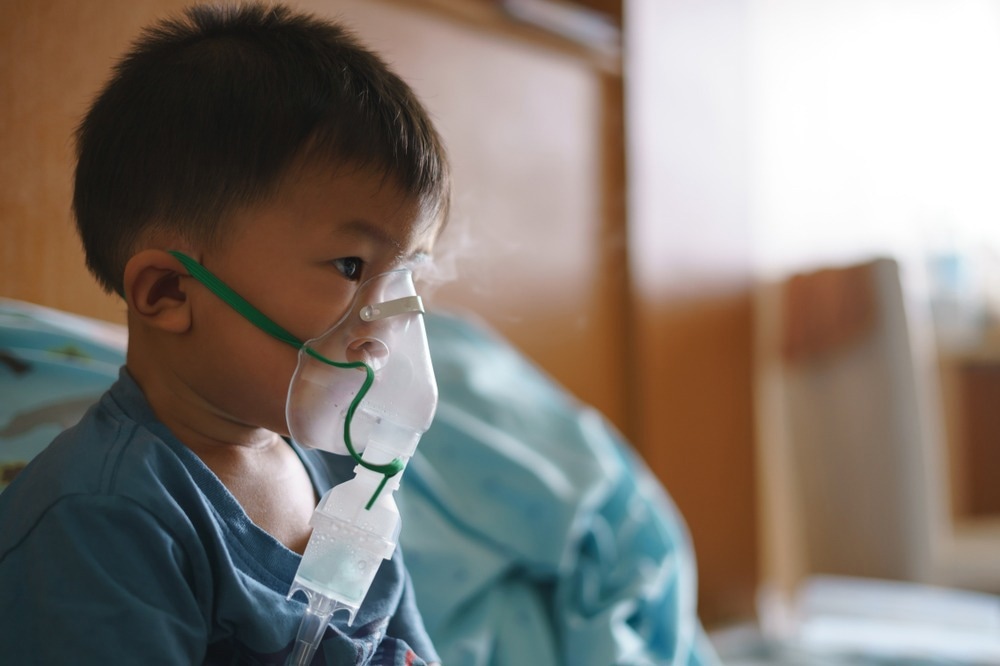Widespread lockdowns throughout the coronavirus disease 2019 (COVID-19) pandemic largely limited children from being exposed to the respiratory syncytial virus (RSV). This gap in immunity, combined with the reopening of childcare centers and schools, has driven RSV cases to rise throughout the world.

Image Credit: BonNontawat / Shutterstock.com
What is RSV?
RSV is a common respiratory virus that typically causes cold-like symptoms, including runny nose, coughing, sneezing, reduced appetite, fever, and, in some cases, wheezing. Typically, RSV symptoms appear between four and six days after the initial infection.
RSV can also cause severe symptoms to arise that will require hospitalization. A child who is having trouble eating, breathing rapidly, and/or exhibiting contractions in the muscles between their ribs and/or the muscles in their neck while breathing should be brought to the emergency department immediately.
In addition to the acute effects of this infection in children, a history of severe RSV illness also increases the risk of recurrent wheezing, asthma, reduced respiratory function, and allergic sensitization later in life. These long-term respiratory effects can have a significant impact on the child’s overall quality of life, as well as increase their utilization of healthcare resources throughout life.
Prevalence of RSV
By the time a child turns two years old, it is highly likely that they will have been infected with RSV at some point. In fact, more than 50% of children will be infected with RSV by the time they reach one year of age.
Despite the prevalence of this virus, particularly among young children, one to two out of every 100 children infected with RSV under the age of six months will require hospitalization. Some of the different factors that increase the risk of severe RSV infection include prematurity, low birth weight, exposure to cigarette smoke, as well as the presence of certain comorbidities such as chronic respiratory, cardiovascular, or immune diseases.
In the United States, RSV infections are responsible for 100-300 deaths in children under the age of five each year and over 58,000 hospitalizations. Throughout the world, RSV is the most common cause of respiratory-related death in infants.
Treatment and vaccines
To date, there remains no specific treatment available for RSV aside from symptomatic care. In addition to ensuring that infected children remain hydrated, parents and healthcare providers may also administer over-the-counter drugs like ibuprofen and acetaminophen to reduce fever and pain. Children experiencing severe illness with RSV may be admitted to the hospital for oxygen supplementation or mechanical ventilation.
Currently, there is no vaccine available to prevent RSV infection. Nevertheless, recent progress in the development of RSV vaccines may allow for their approval in the near future.
On November 1, 2022, Pfizer announced the efficacy of their bivalent RSV vaccine when administered to pregnant women during their late second or third trimester. More specifically, these clinical trials reported that over 82% of children were protected from severe RSV illness within the first four to six weeks of life, with over 69% retaining this protection by six months of age.
The threat of a ‘tripledemic’
RSV surges in children typically occur during winter; however, the current epidemic has appeared much earlier than usual, with a high rate of RSV cases reported in September and October of this year. In addition to the strain of unusually severe RSV cases on healthcare systems, the simultaneous circulation of both the flu and severe acute respiratory syndrome coronavirus 2 (SARS-CoV-2), the virus responsible for COVID-19, has the potential to create a ‘tripledemic’ this winter.
Like RSV, an increasing number of flu cases have also been reported unseasonably early this year. In addition, the continual emergence of new immune-evasive SARS-CoV-2 variants, with the Omicron BA.5 subvariant currently the dominant circulating strain, will likely increase the rate of COVID-19 cases as winter approaches.
How to prevent RSV
Like other respiratory viruses, RSV is primarily transmitted through aerosol droplets or direct contact with contaminated objects. Thus, strict hygiene rules that include careful and frequent handwashing, mask-wearing, and social distancing in crowds can help prevent the spread of RSV and other circulating viruses this winter. The U.S. Centers for Disease Control and Prevention (CDC) also advise parents to limit close contact with people experiencing cold-like symptoms.
In young children, breastfeeding has also been shown to significantly mitigate the severe effects of RSV infection. Since nearly all mothers have been exposed to RSV throughout their life, breastfeeding allows for the passage of anti-RSV antibodies that protect infants against the severe effects of this disease.
One recent Italian national prospective cohort study found that non-breastfed infants had a two-times greater risk of being hospitalized with RSV bronchiolitis during the first year of life as compared to breastfed infants.